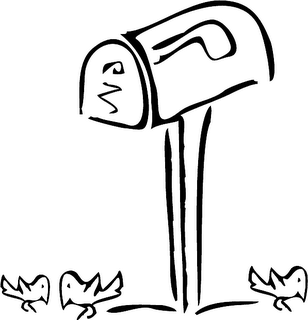 Today, someone wanted a list of helpful social marketing websites/resources on the social marketing listserv. Not wanting to be redundant of my Links page….and out of my own curiousity, I’ve created a list of helpful social marketing listservs , and how to join.
Today, someone wanted a list of helpful social marketing websites/resources on the social marketing listserv. Not wanting to be redundant of my Links page….and out of my own curiousity, I’ve created a list of helpful social marketing listservs , and how to join.
First, let’s define a listserv. TechSoup, one of the oldest and largest nonprofit technology assistance agencies, who offers nonprofits a one-stop resource for technology needs, defines a listserv as:
“[an] electronic mailing lists that distributes written discussions to those who subscribe; each posted unit of a discussion shows up in the subscribers’ e-mail boxes. One of the most useful features of e-mail lists or listservs is the fact that you can send the same message to many people at once. Similarly, you can also receive many messages at once in a compiled and organized fashion.”
Social Marketing Listserv
The list is a place for those in academia, in research, and in practice to exchange information to advance the field, create discussion, present issues and debates, and encourage collaboration of resources. Alan Andreasen runs the list.
To join the Social Marketing listserv, subscribe to listproc@listproc.georgetown.edu through email and type subscribe soc-mktg <your name> in the message body (i.e., subscribe soc-mktg John Smith).
Social Marketing in Higher Education Listserv
The purpose for the Social Marketing in Higher Education Listserv is to allow engagement and participation in discussion of the application of evidence- and practice-based social marketing to bring about positive health and social change and enhanced learning on campuses. (taken from the website.)
To subscribe, you must go to this here and fill out the 5 second form.
Fostering Sustainable Behavior Listserv
The Fostering Sustainable Behavior Listserv currently has over 6000 subscribers from around the globe who are involved in delivering environmental programs.
To subscribe, send an email to fsb-on@cbsmlist.com You will receive a reply asking you to confirm your subscription. Once confirmed, you can post message by sending them to fsb@cbsmlist.com
American Communication Listserv
- To join, compose an email to listproc@listproc.appstate.edu, and in the text area enter: sub ACA-L your name (Write your actual name there instead of “your name.”) Or, go to the online subscription page, and enter in your name and email address.
The Nonprofit-Social-Marketing Listserv
This smaller listserv I think is out of the UK. To subscribe to this list serv, you must fill out the 5 second online application found here.
ORG-MARKETING Listserv
This list focuses on the subject of marketing for non-profits and NGOs. A partial list of topics include PSAs, low (or no) budget marketing, promotion and advertising, surveys, service quality, marketing planning for non-profits, positioning, market models, relationship marketing, database marketing, and marketing ethics.
To subscribe to Org-Marketing, send the following command to the server listserv@amic.com in the BODY of the e-mail: SUBSCRIBE Org-Marketing
Nonprofit-Net Listserv
This list covers nonprofit and internet related topics. To subscribe, send the email message ‘SUB NONPROFIT-NET’ to: listproc@lists.nonprofit.net
Webcontent.gov Listserv (for Federal employees only) Web Content Managers Listserv
This list is open to web content managers from any level of U.S. Government: federal, state, and local. Since the purpose of this group is to exchange ideas among those of us who are in these roles, they do not admit contractors or other private individuals.
To subscribe, send an email to webmanager@hud.gov with ‘web content managers listserv’ in the subject line along with your email address, name, job title, and agency.
More
- For a list of environmental listservs, this site provides a good comprehensive list.
- For more nonprofit and related listservs, Idealist.org offers some great ones here.
- For a long, comprehensive list of more list servs on a variety of communication related topics, the University of Iowa provides a good list here.
- The American Marketing Association also provides a fuller list of its list-servs and chats.
- This site also lists about 100 marketing and advertising listservs available.
***
Please leave the name of your favorite and helpful listserv in the comments. From my search, I have a feeling there are many more out there! Or, which ones, out of them all, do you find most helpful?










